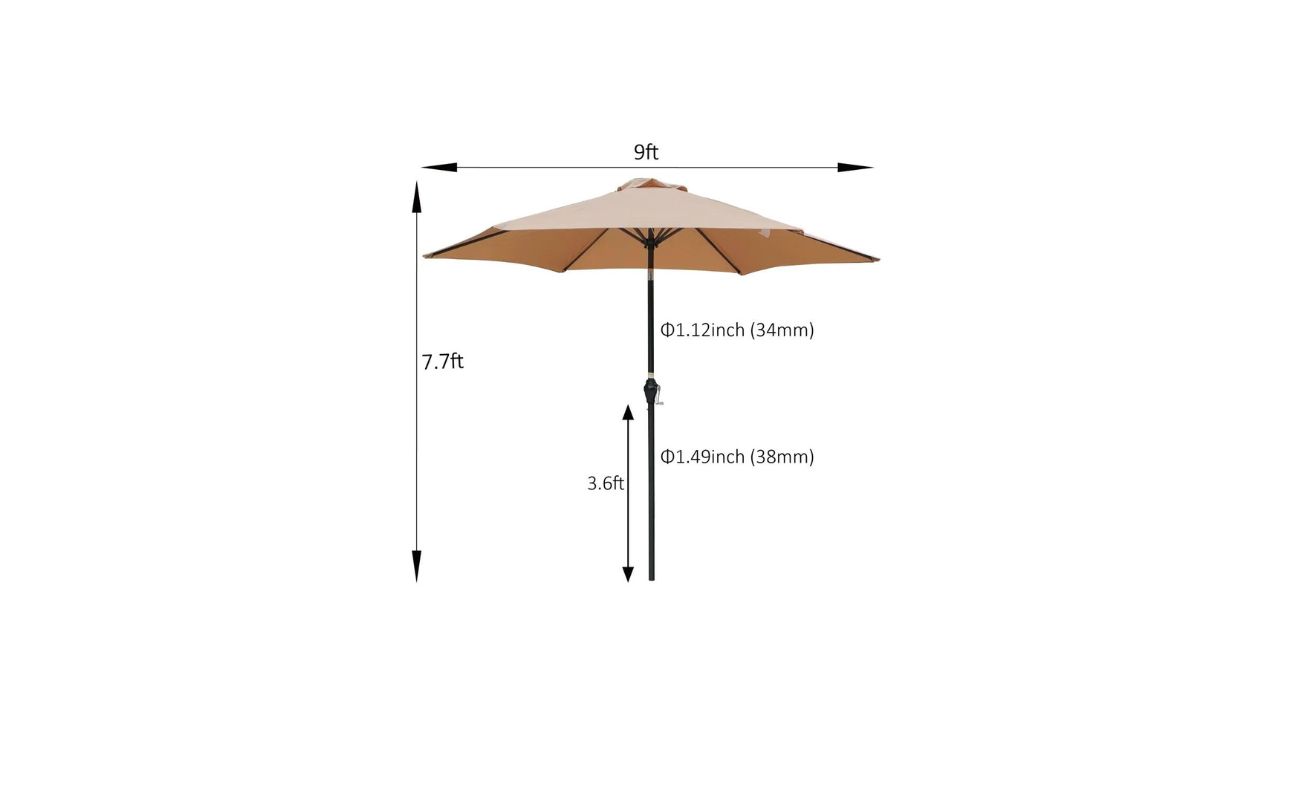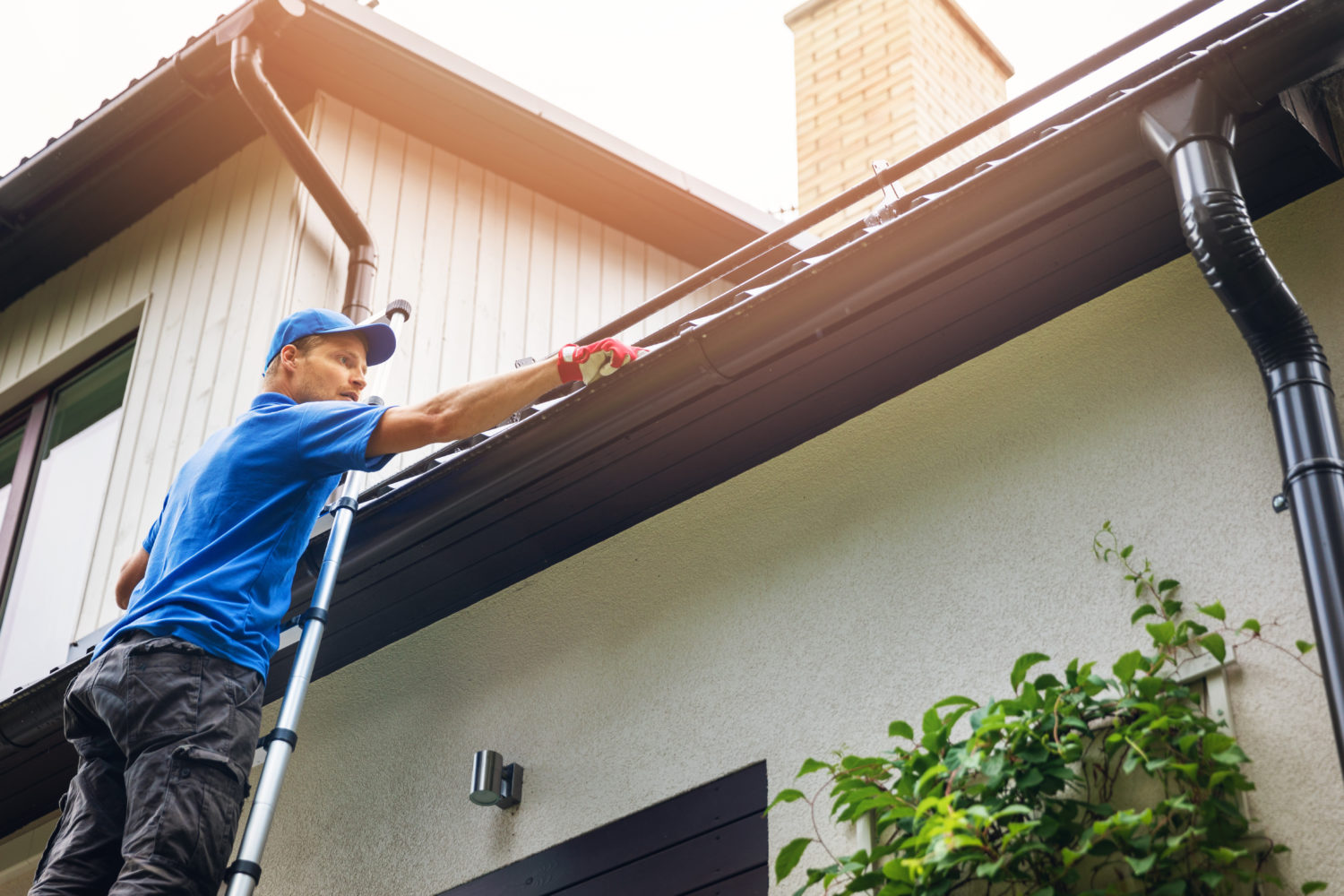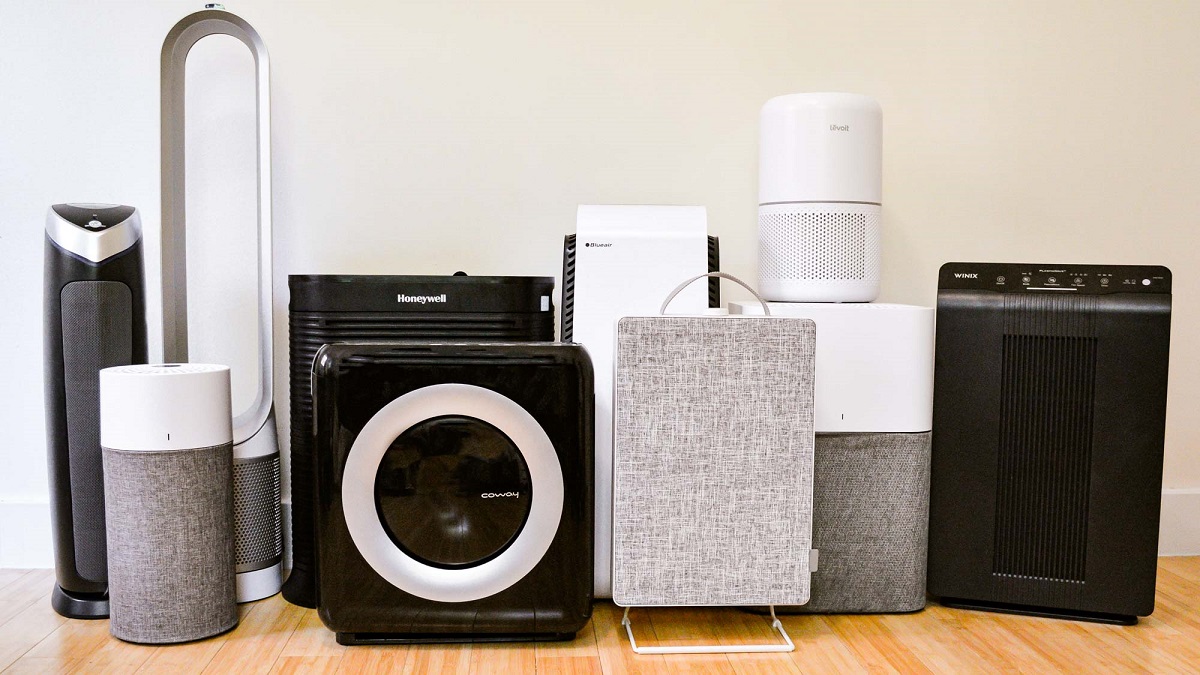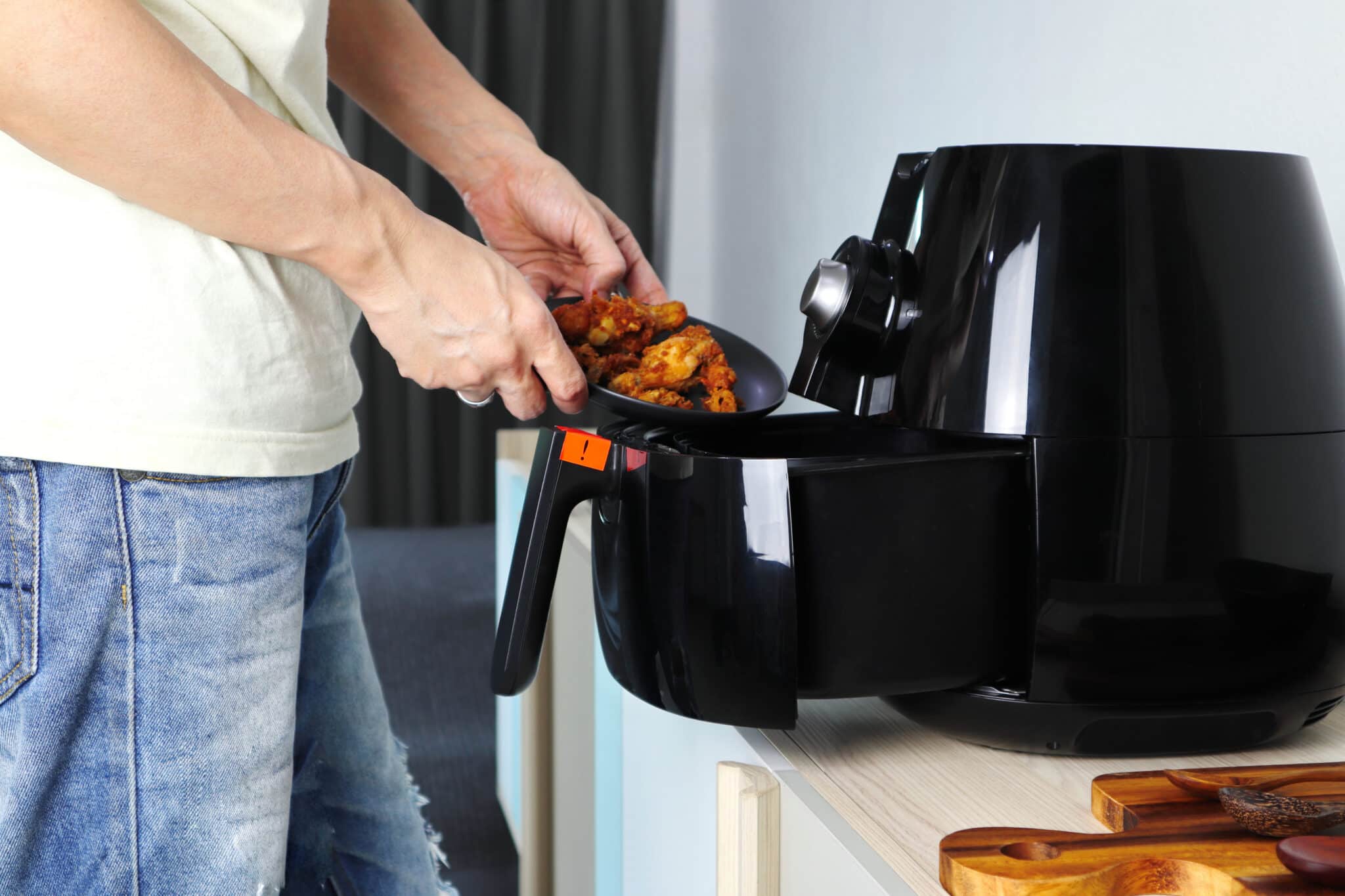Home>Furniture>Outdoor Furniture>What Size Of Patio Umbrella Do I Need


Outdoor Furniture
What Size Of Patio Umbrella Do I Need
Modified: March 7, 2024
Unsure of what size patio umbrella you need for your outdoor furniture? Read our helpful guide to find the perfect fit and make your outdoor space comfortable and stylish.
(Many of the links in this article redirect to a specific reviewed product. Your purchase of these products through affiliate links helps to generate commission for Storables.com, at no extra cost. Learn more)
Introduction
When it comes to creating a comfortable and inviting outdoor space, patio umbrellas play a vital role. Not only do they provide much-needed shade, but they also add a stylish touch to your patio furniture. However, choosing the right size of patio umbrella can be a daunting task for many homeowners.
The size of your patio umbrella will greatly impact its functionality and overall aesthetic appeal. An umbrella that is too small may not provide sufficient shade, while one that is too large might overpower your patio space. In order to make an informed decision, there are several factors to consider.
In this article, we will explore the key factors you should keep in mind when determining the size of a patio umbrella. We will also provide you with step-by-step guidance on measuring your patio and table to ensure the perfect fit. So let’s dive in and discover the secrets to finding the ideal size of patio umbrella for your outdoor haven.
Key Takeaways:
- Choose a patio umbrella size that fits your space, table, and shade needs. Consider wind resistance and style to create a comfortable and visually appealing outdoor oasis.
- Measure your patio and table, consider shade coverage, and select a sturdy and stylish umbrella. Create a cozy and safe outdoor space for relaxation and entertainment.
Factors to Consider
When choosing the size of your patio umbrella, it’s essential to take several factors into consideration. This will ensure that you select an umbrella that not only fits well within your outdoor space but also provides adequate shade and protection.
Let’s explore the key factors you should consider:
1. Size of the Patio
The size of your patio is the first factor to consider when determining the size of your umbrella. Measure the dimensions of your patio or the specific area where you plan to place the umbrella. This will give you a clear idea of how much space you have available and help you decide on an umbrella that fits appropriately.
2. Table Size
If you have a patio table, its size will be another important consideration. Measure the diameter or dimensions of your table, as the umbrella should ideally extend beyond the edges of the table to provide adequate shade for all seated guests. A general rule of thumb is that the umbrella should be about 2 feet larger than the table in all directions.
3. Shade Coverage
Consider the amount of shade coverage you need. Do you want the umbrella to cover a small seating area or provide shade for the entire patio? This will help you determine whether you need a smaller umbrella for a more intimate setting or a larger one to cover a larger space.
Read more: What Size Patio Heater Do I Need
4. Wind Conditions
Take into account the wind conditions in your area. If you live in a windy region, it’s crucial to choose an umbrella that is sturdy and can withstand strong gusts. Look for umbrellas with wind-resistant features such as vented canopies, sturdy frames, and weighted bases to ensure stability and prevent damage.
5. Style and Design
Lastly, consider the style and design of the patio umbrella. It should complement the overall aesthetic of your outdoor space. Whether you prefer a classic, market-style umbrella or a more modern and sleek design, make sure the size you choose aligns with your desired visual appeal.
By taking these factors into consideration, you’ll be well on your way to selecting the perfect size of patio umbrella that suits your needs and enhances the beauty of your outdoor living space.
Size of the Patio
When considering the size of your patio umbrella, the first factor to take into account is the size of your patio itself. The dimensions of your patio will dictate the maximum size of the umbrella that can comfortably fit within the space.
To determine the size of your patio, measure the length and width of the area. Use a tape measure to get accurate measurements, and record these dimensions for reference.
Keep in mind that the size of your patio umbrella should not overwhelm the space. You want it to fit seamlessly into the area, creating a balanced and aesthetically pleasing look.
If you have a smaller patio, consider opting for a compact or half-size umbrella. These are typically smaller in diameter, allowing you to maximize the use of the limited space without sacrificing shade coverage.
Alternatively, if you have a larger patio with ample room, you can opt for a larger umbrella that provides a wider shade coverage. This will create a more spacious and comfortable environment for you and your guests to enjoy.
It’s important to note that the size of the patio umbrella is not solely determined by the size of the patio. Other factors, such as the presence of patio furniture and walking space, should also be taken into consideration.
If your patio is already furnished with tables, chairs, or other pieces of furniture, you’ll need to account for this when choosing a suitable umbrella size. You want to ensure that the umbrella provides shade coverage over the furniture, allowing you and your guests to enjoy the outdoors comfortably.
Additionally, take into consideration the walking space on your patio. You don’t want the umbrella to obstruct the flow of movement or create crowded areas. A properly sized umbrella will blend seamlessly with the patio layout, providing shade without impeding mobility.
By considering the size of your patio, furniture arrangement, and walking space, you will be able to determine the ideal size of the patio umbrella that fits perfectly into your outdoor space.
Table Size
When selecting the size of your patio umbrella, the size of your table is an important consideration. If you have a patio table, the umbrella should provide sufficient shade coverage for both the table and the people seated around it.
To determine the appropriate umbrella size for your table, start by measuring the diameter or dimensions of the table. This will give you an idea of the surface area that needs to be shaded.
A general rule of thumb is that the umbrella should extend beyond the edges of the table by about 2 feet in all directions. This ensures that the umbrella provides adequate shade coverage for everyone seated at the table, even as the sun moves throughout the day.
For rectangular or oval-shaped tables, consider the length and width of the table when determining the umbrella size. For example, if you have a rectangular table that measures 6 feet long and 3 feet wide, a rectangular umbrella with dimensions of 8 feet by 5 feet would be appropriate.
Keep in mind that the umbrella should not only cover the tabletop but also provide shade for the chairs placed around the table. This ensures that everyone seated is protected from the sun’s rays and can comfortably enjoy their meal or conversation.
In addition to considering the size of the table, think about the number of chairs you plan to have around it. If you frequently entertain large groups, you’ll want to choose an umbrella that can comfortably accommodate the additional seating.
It’s worth noting that not all patio umbrellas are designed to be used with a table. Some umbrellas are freestanding and can be placed anywhere on your patio. In this case, you have more flexibility in size selection as you don’t need to consider table dimensions.
Ultimately, the size of your table will play a significant role in determining the size of your patio umbrella. By measuring the table and considering the number of chairs, you can ensure that you select an umbrella that provides ample shade coverage for your outdoor dining or seating area.
Read more: What Size Curtains Do I Need For Patio Doors
Shade Coverage
When selecting a patio umbrella, one of the key considerations is the amount of shade coverage you desire. This factor will depend on the size of the area you want to shade and the level of protection you need from the sun’s rays.
Begin by assessing how much of your outdoor space you want the umbrella to cover. Are you primarily looking to shade a small seating area or do you want to provide shade for the entire patio?
If you have a smaller seating area, such as a cozy bistro set or a couple of chairs, a compact umbrella with a smaller canopy size may be sufficient. This will provide shade exactly where you need it, allowing you to enjoy your outdoor space without being exposed to direct sunlight.
On the other hand, if you have a larger patio or plan to shade a dining area with multiple tables and chairs, you will need a larger umbrella with a broader canopy. This will ensure that the entire space is covered adequately, creating a more comfortable and enjoyable environment.
Consider the shape of the canopy as well. Most patio umbrellas come in round, square, or rectangular shapes. Round umbrellas offer symmetrical shade coverage and are a popular choice for smaller areas. Square or rectangular umbrellas, on the other hand, are suitable for larger dining areas or when you want to align the shade with the shape of your patio or seating arrangement.
It’s also important to take into account the position of the sun and how it moves throughout the day. Observe your outdoor space at different times to determine the areas that receive the most direct sunlight. The umbrella should be placed strategically to provide shade where it’s most needed during those times.
Additionally, keep in mind that the angle of the sun changes throughout the year. If you live in an area with distinct seasons, consider how the shade coverage may vary during different times of the year. You may need a larger umbrella during the summer months when the sun is higher in the sky and a slightly smaller one during the winter when the sun is lower.
By considering the amount of shade coverage you require and the positioning of the sun, you can select a patio umbrella that provides optimal shade and enhances the comfort of your outdoor space.
Wind Conditions
When choosing a patio umbrella, it’s important to consider the wind conditions in your area. Wind can be a significant factor that can impact the stability and durability of your umbrella.
If you live in a region that experiences strong winds or frequent gusts, it’s crucial to select an umbrella that is designed to withstand these conditions. Look for umbrellas that have features specifically built to resist wind, such as vented canopies and sturdy frames.
Vented canopies allow air to pass through, reducing the risk of the umbrella catching the wind and potentially toppling over. These canopies have strategically placed vents that help to dissipate the wind pressure, increasing stability and preventing damage.
Another important consideration is the quality and strength of the umbrella’s frame. Opt for umbrellas with frames made of durable materials like aluminum or fiberglass, which are known for their resilience to wind. These materials are lightweight yet sturdy, offering optimal balance between strength and portability.
In addition to the umbrella’s design, consider the type of base you use to secure it. A weighted base or one that can be filled with sand or water will provide extra stability, preventing the umbrella from tipping over in gusty conditions. Make sure to choose a base that matches the size and weight requirements of your umbrella.
It’s also a good practice to take proactive measures to protect your umbrella during heavy winds. If you know that strong winds are expected, it’s advisable to close and secure the umbrella, even if it’s designed for wind resistance. This will help prevent any potential damage or accidents.
Lastly, consider the maintenance and care required for your umbrella in windy conditions. Regularly inspect the umbrella for any signs of wear or damage, such as frayed fabric or loose joints. Clean the umbrella regularly, especially if it has been exposed to dirt, pollen, or other debris that can affect its performance.
By taking wind conditions into account and selecting a sturdy and wind-resistant umbrella, you can ensure that your outdoor space remains safe and enjoyable, even during blustery weather.
Style and Design
While the size and functionality of a patio umbrella are essential, the style and design should also be considered. Your umbrella should not only provide shade but also enhance the overall aesthetic appeal of your outdoor space.
Consider the design and style of your patio furniture, as well as the overall theme of your outdoor decor. Choose an umbrella that complements the existing elements and adds a cohesive look to your patio.
Patio umbrellas come in a wide range of styles, from traditional market umbrellas with classic colors and patterns to more contemporary designs with sleek lines and bold colors. Decide on the look and feel you want to achieve and choose an umbrella that matches your personal preferences.
Additionally, think about the color options available. The color of your umbrella can impact the ambiance and mood of your outdoor space. Lighter colors, such as white or beige, create a fresh and airy atmosphere, while darker colors, like navy or black, add a sophisticated and elegant touch.
Consider the shape of the canopy as well. Round canopies are the most common and versatile, suiting various patio styles. Rectangular or square canopies provide a more modern and structured look, ideal for contemporary outdoor spaces.
Some patio umbrellas come with features like tilting mechanisms, allowing you to adjust the angle of the canopy to redirect the shade as the sun moves. This not only provides flexible shade options but also adds a functional aspect to your umbrella.
When it comes to materials, choose ones that are not only visually appealing but also durable and weather-resistant. Fabric options range from polyester to solution-dyed acrylic, both known for their durability and fade resistance. Frames can be made of aluminum, wood, or steel, each with its unique style and characteristics.
Lastly, consider the overall size and scale of your patio umbrella in relation to your outdoor space. You want to choose a size that fits well within the area without overwhelming the surroundings.
By selecting a patio umbrella that matches your style and design preferences, you can create a visually pleasing outdoor space that reflects your personality and adds to the overall ambiance of your patio.
Steps to Determine the Right Size
Now that we’ve explored the key factors to consider when choosing the size of your patio umbrella, let’s walk through a step-by-step process to help you determine the perfect fit for your outdoor space.
Read more: What Size Patio Furniture Cover Do I Need
1. Measure the Patio Area
Start by measuring the dimensions of your patio or the specific area where you plan to place the umbrella. Use a tape measure to accurately measure the length and width of the space. Note down these measurements as they will serve as a reference for selecting an appropriately sized umbrella.
2. Measure the Table
If you have a patio table, measure its dimensions. This includes the diameter or length and width, depending on the shape of the table. Consider the number of chairs around the table as well. The umbrella should provide shade for the table and the seating area around it.
3. Determine Shade Coverage
Decide how much shade coverage you need. Assess whether you want to cover just a specific seating area or provide shade for the entire patio. This will help you determine the size and shape of the umbrella that will best meet your shade requirements.
4. Consider Wind Conditions
Take into account the wind conditions in your area. If you experience strong winds, opt for an umbrella with wind-resistant features such as vented canopies and sturdy frames. The umbrella should be able to withstand gusts and remain stable.
Read more: What Size Awning Do I Need
5. Consider Style and Design
Lastly, consider the style and design preferences for your outdoor space. Choose an umbrella that complements your patio furniture and overall aesthetic. Consider factors such as color, shape, and material to create a cohesive and visually pleasing outdoor setting.
By following these steps, you will be able to determine the right size of the umbrella that perfectly fits your patio, provides ample shade coverage, and enhances the overall style and design of your outdoor space.
Measure the Patio Area
Measuring the patio area is the first step in determining the right size of your patio umbrella. This will give you a clear understanding of the available space and help you choose an umbrella that fits perfectly within the area.
Start by gathering a measuring tape, pen, and paper to record your measurements. Measure the length and width of your patio, taking accurate measurements from one end to the other. Make sure to measure the usable space where you plan to place the umbrella, excluding any permanent fixtures or obstructions.
When measuring, be mindful of any irregularities in shape or layout, such as curved corners or angles. Take multiple measurements from different points to ensure accuracy, and record the largest measurements you obtain.
Once you have the measurements, you can use them as a reference when selecting the appropriate-sized umbrella. Remember that the size of the umbrella should not exceed the dimensions of your patio, as this could lead to overcrowding and an unbalanced appearance.
If you have an irregularly shaped patio, such as one with rounded edges or uneven borders, you can estimate the area by breaking it down into smaller sections. Measure each section individually and calculate the total area by summing up the measurements of all sections.
Keep in mind that the size of the patio umbrella should also allow for comfortable movement and circulation of air. Ensure that there is enough space for people to walk around and that the umbrella does not obstruct any paths or seating areas.
By accurately measuring the patio area, you will have a solid foundation for selecting an umbrella that fits perfectly and maximizes the available space. This step is crucial in ensuring that the umbrella not only provides shade but also enhances the overall functionality and visual appeal of your outdoor area.
Measure the Table
When determining the right size of your patio umbrella, measuring the dimensions of your table is an important step. This will help ensure that the umbrella provides sufficient shade coverage for the table and the people seated around it.
Begin by measuring the diameter or length and width of your table, depending on its shape. Use a tape measure to accurately measure these dimensions, making sure to account for any overhang from the table’s edge.
When measuring a round table, simply measure the diameter by stretching the tape measure across the widest part of the table. For rectangular or square tables, measure the length from one end to the other, and then measure the width from side to side.
Once you have these measurements, you can determine the appropriate size of the patio umbrella. A general rule of thumb is that the umbrella should extend beyond the edges of the table by about 2 feet in all directions.
This extra 2 feet provides enough shade coverage to ensure that everyone seated at the table is protected from the sun’s rays. It creates a comfortable environment for dining, relaxing, or engaging in conversations without the discomfort of direct sunlight.
Consider the number of chairs you have around the table as well. The umbrella’s shade coverage should ideally extend to cover the chairs, allowing everyone to enjoy a shaded experience.
When selecting the umbrella size, remember that a larger umbrella may be required if you have a larger table or more chairs. Similarly, if you have a smaller table or fewer chairs, a smaller umbrella may suffice. It’s important to achieve a balance between providing ample shade and maintaining a proportional aesthetic.
Keep in mind that not all patio umbrellas are designed to be used with a table. Some umbrellas are freestanding and don’t require table measurements for selection. In this case, you have more flexibility in choosing the umbrella size that best fits your overall outdoor space.
By measuring your table, considering the number of chairs around it, and applying the 2-foot rule, you can ensure that the patio umbrella provides sufficient shade coverage for your outdoor dining or seating area.
Determine Shade Coverage
When selecting a patio umbrella, it’s crucial to determine the amount of shade coverage you need. This will depend on the size of the area you want to shade and the level of protection you desire from the sun’s rays.
Consider the extent of coverage you want for your outdoor space. Are you looking to shade a small seating area or do you want to provide shade for the entire patio? This will help you determine the size and style of the umbrella that best meets your shade requirements.
If you have a smaller seating area, such as a cozy bistro set or a couple of chairs, a compact umbrella with a smaller canopy size may be sufficient. This would provide shade precisely where you need it, allowing you to enjoy your outdoor space without being exposed to direct sunlight.
On the other hand, if you have a larger patio or plan to shade a dining area with multiple tables and chairs, you will need a larger umbrella with a broader canopy. This will ensure that the entire space is covered adequately, creating a more comfortable and enjoyable environment for you and your guests.
When determining shade coverage, it’s important to consider the position of the sun throughout the day and how it moves across your outdoor space. Observe your patio at different times to identify the areas that receive the most direct sunlight. This will help you position the umbrella to provide shade exactly where it’s needed during different times of the day.
It’s worth noting that the angle of the sun changes throughout the year. If you live in an area with distinct seasons, consider how the shade coverage may vary. You might need a larger umbrella during the summer months when the sun is higher in the sky and a slightly smaller one during the winter when the sun is lower.
Additionally, consider the shape of the umbrella canopy. Round canopies offer symmetrical shade coverage and are a popular choice for smaller areas. Rectangular or square canopies, on the other hand, provide a more structured and defined shade area, ideal for larger dining spaces or aligning with the shape of your patio or seating arrangement.
By determining the shade coverage required for your outdoor space, you can select a patio umbrella that provides ample shade and enhances the comfort of your patio, allowing you to enjoy the outdoors without the harsh sun rays.
To determine the size of patio umbrella you need, measure the area you want to shade. The umbrella should be at least 5 feet larger than the space to provide adequate coverage.
Read more: What Size Mixer Do I Need
Conclusion
Choosing the right size of patio umbrella is essential for creating a comfortable and inviting outdoor space. By considering various factors such as the size of your patio, the dimensions of your table, the desired shade coverage, wind conditions, and the style and design, you can make an informed decision that enhances both functionality and aesthetics.
Measuring the patio area and table dimensions allows you to select an umbrella that fits perfectly within the available space. Ensuring sufficient shade coverage for your desired area guarantees a comfortable experience for you and your guests.
Take into account the wind conditions in your area and select an umbrella with wind-resistant features to ensure stability and durability. Safety is paramount, and choosing an umbrella that can withstand strong gusts will prevent any accidents or damage.
Don’t forget to consider the style and design of the umbrella, ensuring it complements the overall aesthetic of your outdoor space. Choosing the right color, shape, and material will add a touch of elegance and harmony to your patio.
By following the steps to determine the right size of your patio umbrella, you can create an outdoor oasis that provides shade, comfort, and visual appeal. Whether you’re enjoying a meal, socializing with friends, or simply relaxing alone, your patio umbrella will play a vital role in enhancing your outdoor experience.
Remember, it’s not only about the size of the umbrella but how it fits harmoniously with your patio’s layout and furniture arrangement. With careful consideration and attention to detail, you can select the perfect patio umbrella that transforms your outdoor space into a haven of relaxation and enjoyment.
Frequently Asked Questions about What Size Of Patio Umbrella Do I Need
Was this page helpful?
At Storables.com, we guarantee accurate and reliable information. Our content, validated by Expert Board Contributors, is crafted following stringent Editorial Policies. We're committed to providing you with well-researched, expert-backed insights for all your informational needs.











0 thoughts on “What Size Of Patio Umbrella Do I Need”